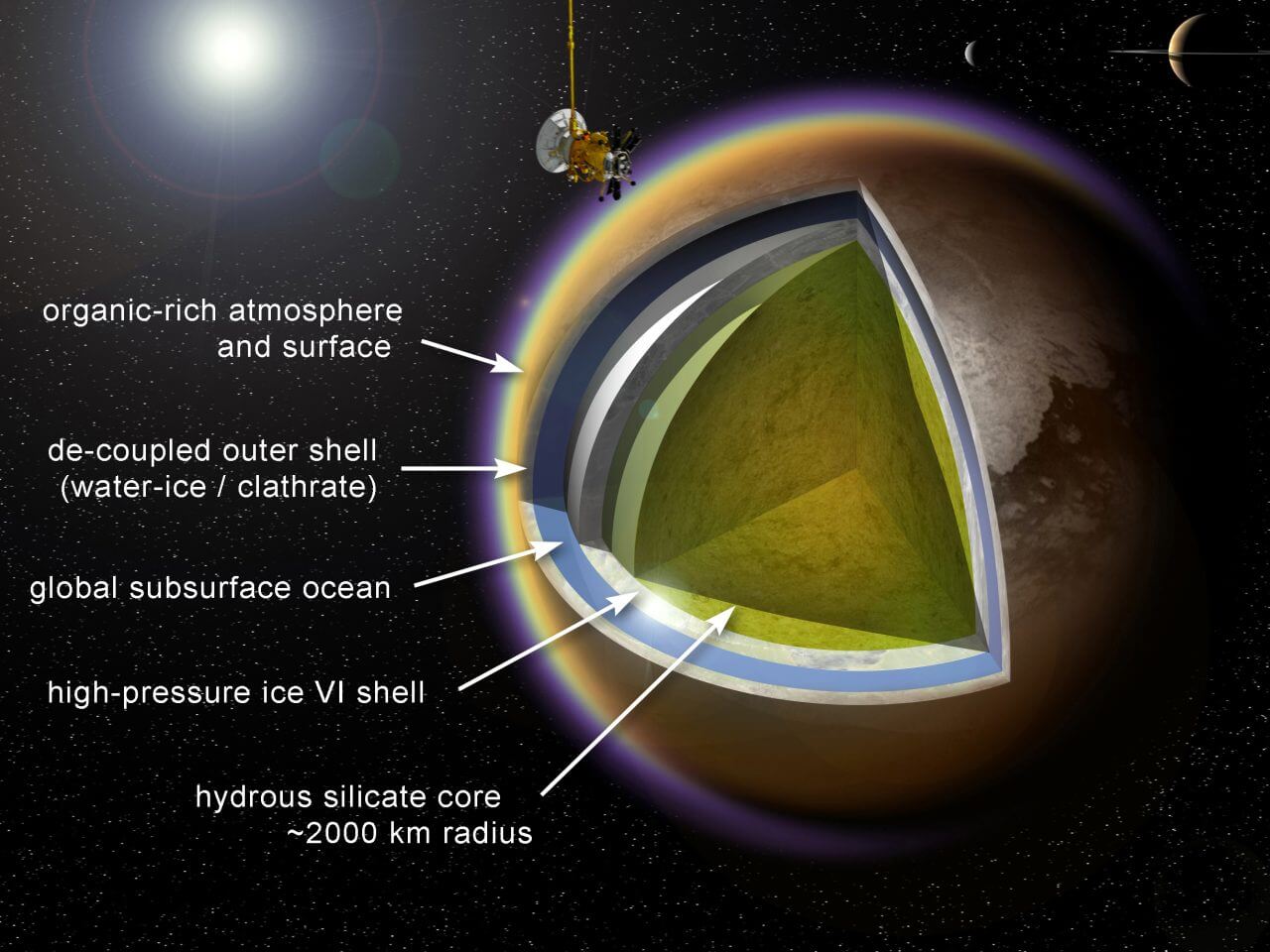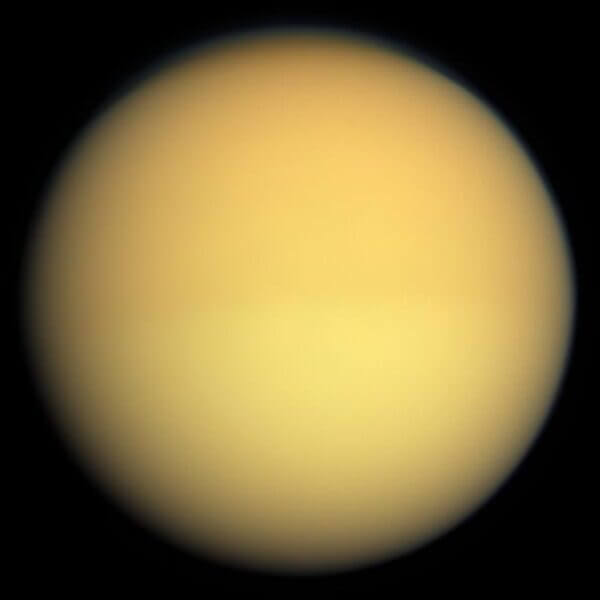There are many celestial bodies in the solar system that are expected to have oceans larger than Earth's under their thick ice. Such an environment suggests the presence of life, but if the existence of liquid water is “guaranteed,” can we really believe that life might exist?
A research team led by Katherine Nish of the University of Western Ontario has discovered that Saturn's moons contain abundant organic compounds on their surfaces, and are believed to contain an underground ocean.Titan“, we estimated the amount of organic compounds transported from the surface to the subsurface. As a result, it is estimated that the amount of organic compounds transported was less than 7,500 kg/year in terms of glycine, which is insufficient to sustain life.
This study shows that even Titan, which is rich in organic compounds, has difficulty supporting life, suggesting that conditions may be worse on other celestial bodies.

■Is there an “underground ocean” beneath the frozen celestial bodies?
So far, we have only discovered life on Earth. Life has been found in a wide range of environments, including deep seas, glaciers and volcanoes, but it has been found that life cannot survive anywhere without liquid water. For this reason, the presence of liquid water is considered a prerequisite for searching for life on celestial bodies other than Earth.
Earth is currently the only celestial body confirmed to contain abundant liquid water, but even within the solar system there are several strong candidates. All of these celestial bodies are located far from the Sun, and most of their surfaces are covered with thick ice. However, there is an abundance of liquid water underneath.subterranean sea (inland sea)“It is believed to be forming.
Since the surface is covered with ice, the solar energy reaching these objects is not strong enough to melt the ice. However, it is thought that tidal forces generated by the gravity of other celestial bodies and the heat of decay of radioactive material contained in the rocks may melt the ice as geothermal heat. All of the nominated underground oceans are much smaller than Earth's, howeverThe volume of the underground ocean is several to tens of times larger than the volume of the Earth's oceans.It is believed that this may be the case.
Life on Earth has been discovered to rely on geothermal energy to survive in the depths of the ocean, where no light penetrates, so it is easy to imagine a biosphere spreading across the ocean floor. There are several celestial bodies thought to have underground oceans, including the dwarf planets Pluto and Haumea, Jupiter's moons Europa and Ganymede, and Saturn's moons Enceladus and Titan. Like Enceladus and Europa, the existence of underground oceans is almost certain. They are also the celestial bodies that have and in order to avoid contamination of these celestial bodies, precautions are taken to prevent the planetary probes from being destroyed after their work has ended.
Titan contains abundant organic compounds on its surface


However, life cannot survive on water alone. Organic compounds are needed as a source of energy for life activities or for the formation of our bodies. Although evidence of organic compounds in the underground ocean has already been observed, it is not known whether there are enough organic compounds to support life, and this research has not been more intensively studied than studies proving the existence of an underground layer. . Ocean, it's hard to say we do.
Evidence for this question can be found in Saturn's largest moon,TitanTitan's surface is known to be rich in organic compounds. Most are very simple molecules such as methane and ethane, but larger molecules are also known to exist. The thick atmosphere surrounding Titan appears hazy due to the scattering of light by the high-molecular-weight organic compounds found in the atmosphere. Aerial.
The amount of organic compounds found on Titan's surface is the largest in the solar system other than Earth. In addition, although there are many lakes of liquid methane on the surface, there is believed to be 14 times more liquid water deep within the Earth than there is in the Earth's oceans. If the rich organic compounds found on the surface were supplied to the underground ocean, it would not be surprising that a unique form of life would be nurtured, but for this to happen, the organic compounds must be supplied many kilometers underground.
Nish and his colleagues estimated the amount of organic compounds transported to the subsurface ocean on Titan. Titan is thought to lack tectonic plates like Earth, so there are limited means of transporting surface materials to the underground ocean. Nish and others hypothesized that celestial bodies collide with each other in order to transfer matter. When a celestial body collides, the energy melts ice on the surface, mixing liquid water and organic compounds. Water is denser than ice, and because it “sinks” against the ice, it is thought to reach the ocean underground.
■Titan's underground ocean is a 'very thin soup'
Nish and his colleagues used glycine, one of the simplest amino acids, to estimate the rate of glycine production and degradation in Titan's environment. From the estimated collision rate of celestial bodies with Titan, they estimated the amount of glycine being supplied to the underground oceans.
Surprisingly,The amount of glycine supplied to the underground oceans is less than 7,500 kg per year.He estimated that even if you put the same amount of glycine as a single African elephant into an ocean 14 times the size of Earth, only a “very thin soup” of organic compounds would be produced, which would be insufficient to sustain life.
This finding, which shows that even a body rich in organic compounds like Titan, has a poor supply of organic compounds, is bad news when considering life in the subsurface ocean. Other candidates, such as Europa and Enceladus, are thought to contain fewer organic compounds than Titan. This research draws attention to whether this research will have an impact on other celestial bodies.
source
- Catherine Nish, et al. “Organic inputs to Titan's subsurface ocean through impact craters”. (Astrobiology)
- Jeff Reno. “Saturn's largest moon likely uninhabitable: Western study”. (Western University)
Written by Riri Aya

“Travel maven. Beer expert. Subtly charming alcohol fan. Internet junkie. Avid bacon scholar.”





More Stories
It's better to call it a digital camera. The Xperia 1 VI lets you take any kind of photo | Gizmodo Japan
Google may be developing a new device called “Google TV Streamer” to replace “Chromecast”
What do you want to talk about? “Persona 3 Reload” recommendation campaign is running until July 31st! |.Persona Channel